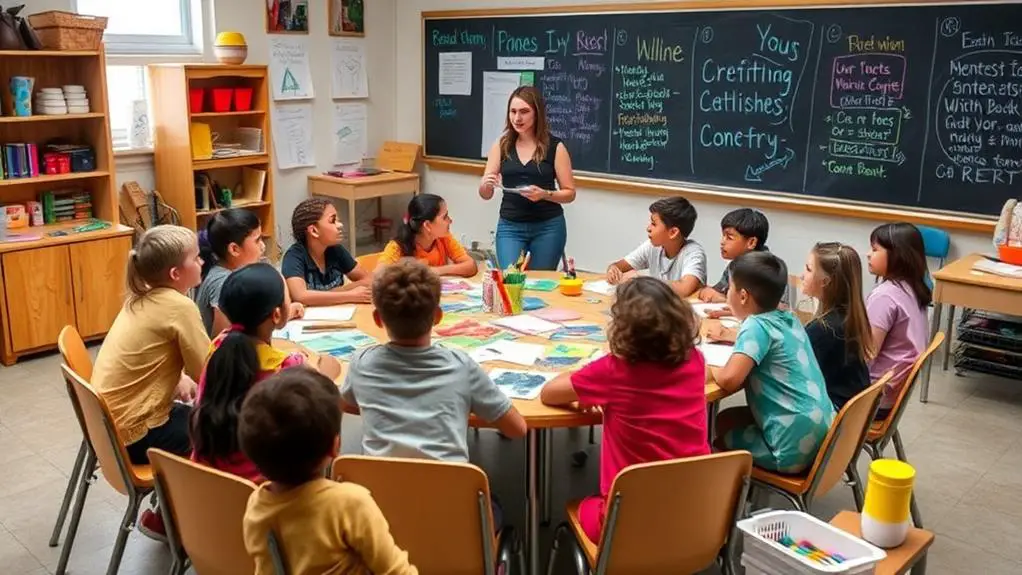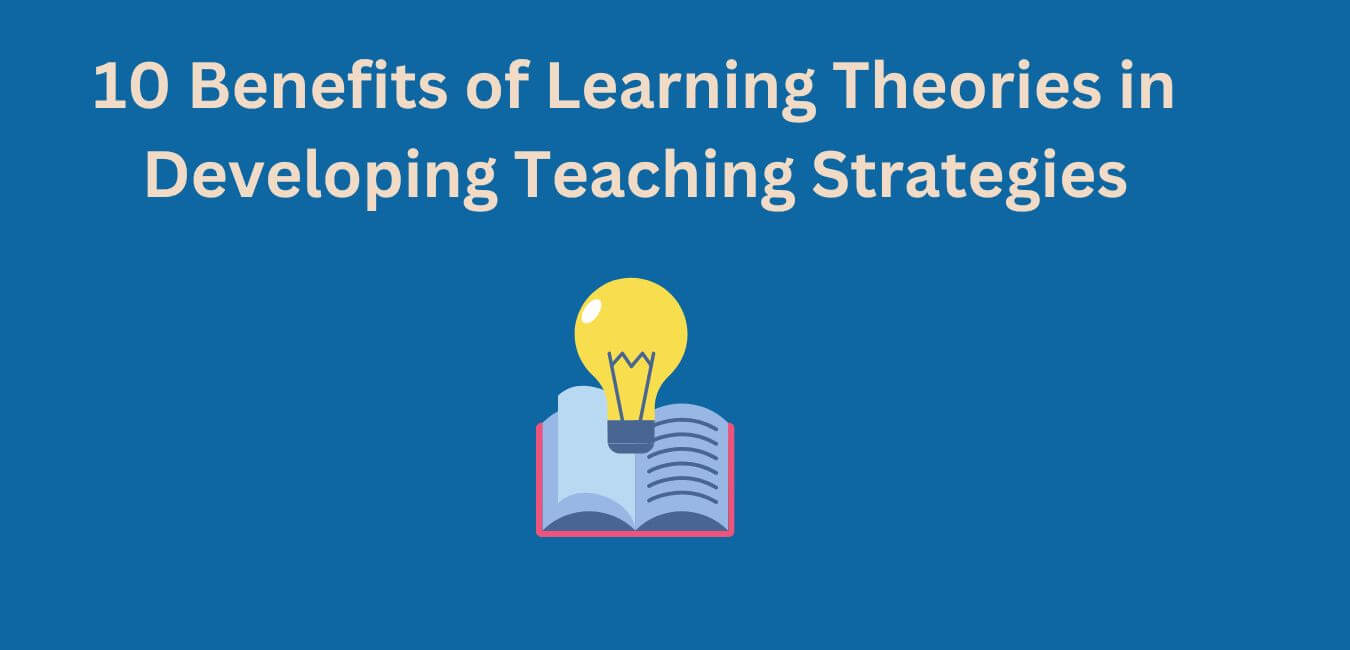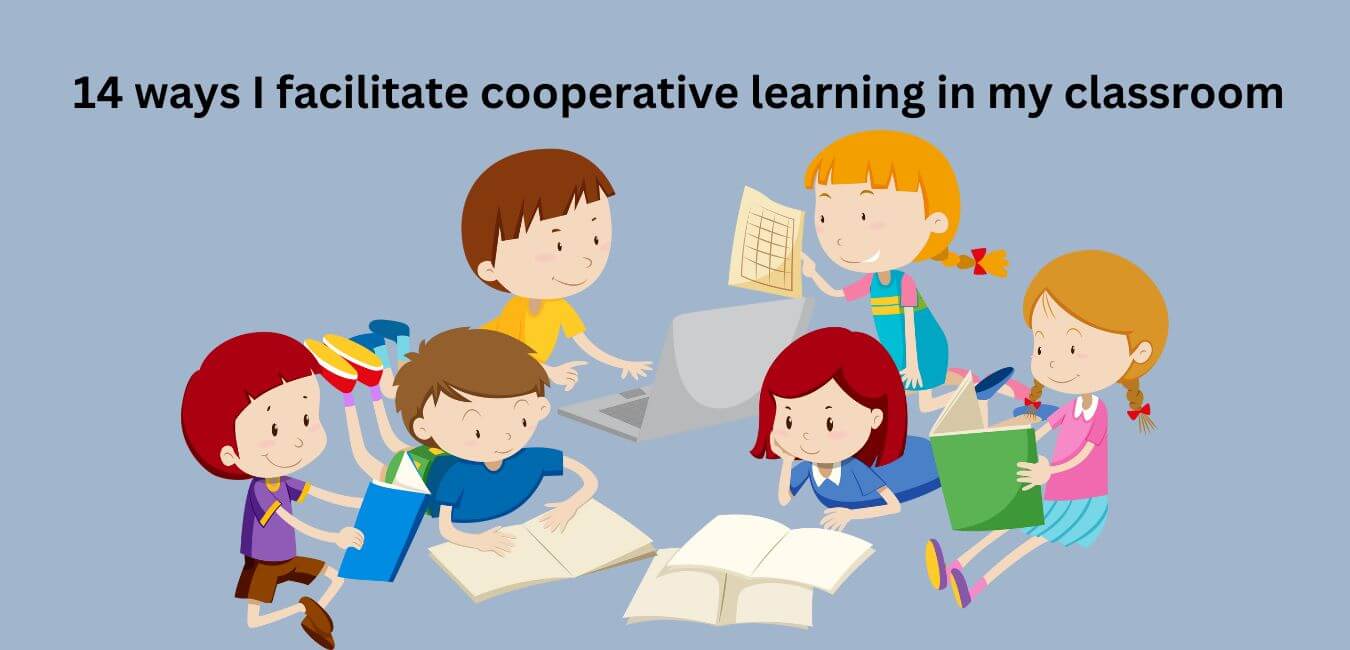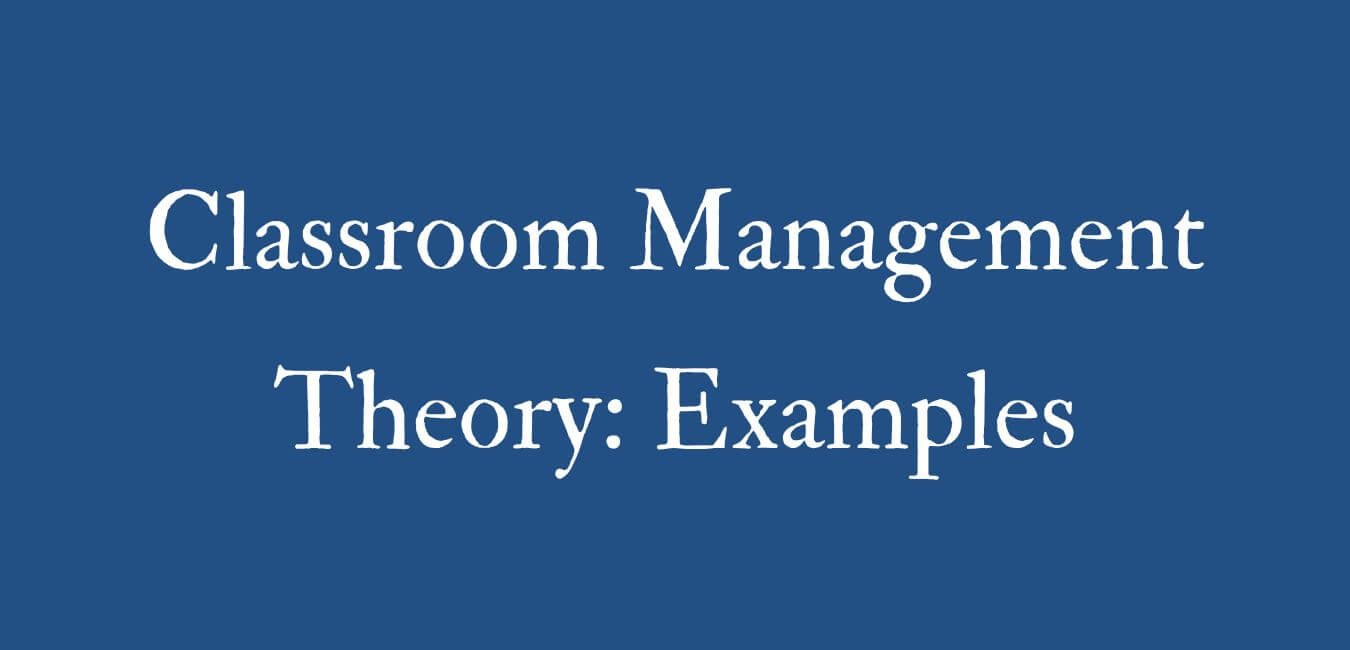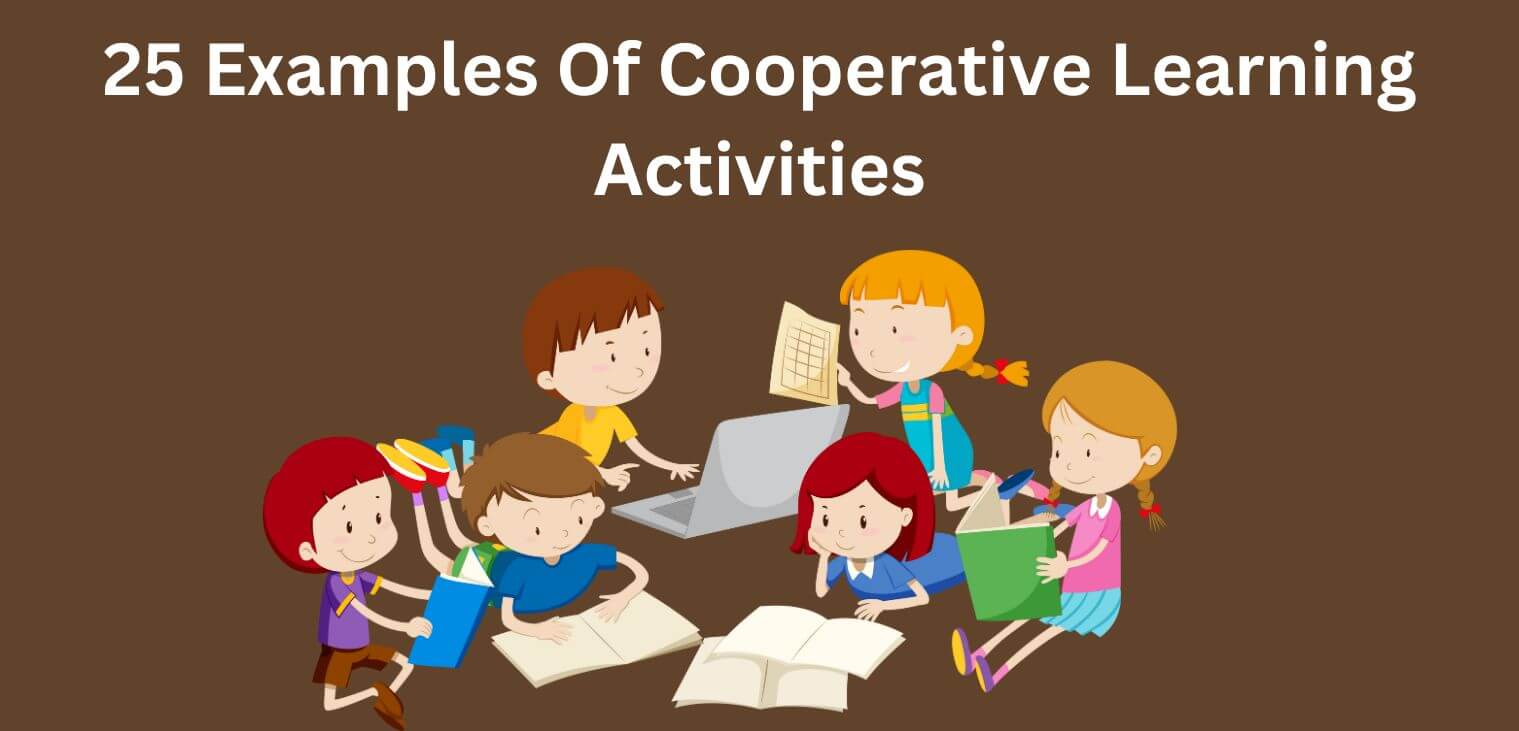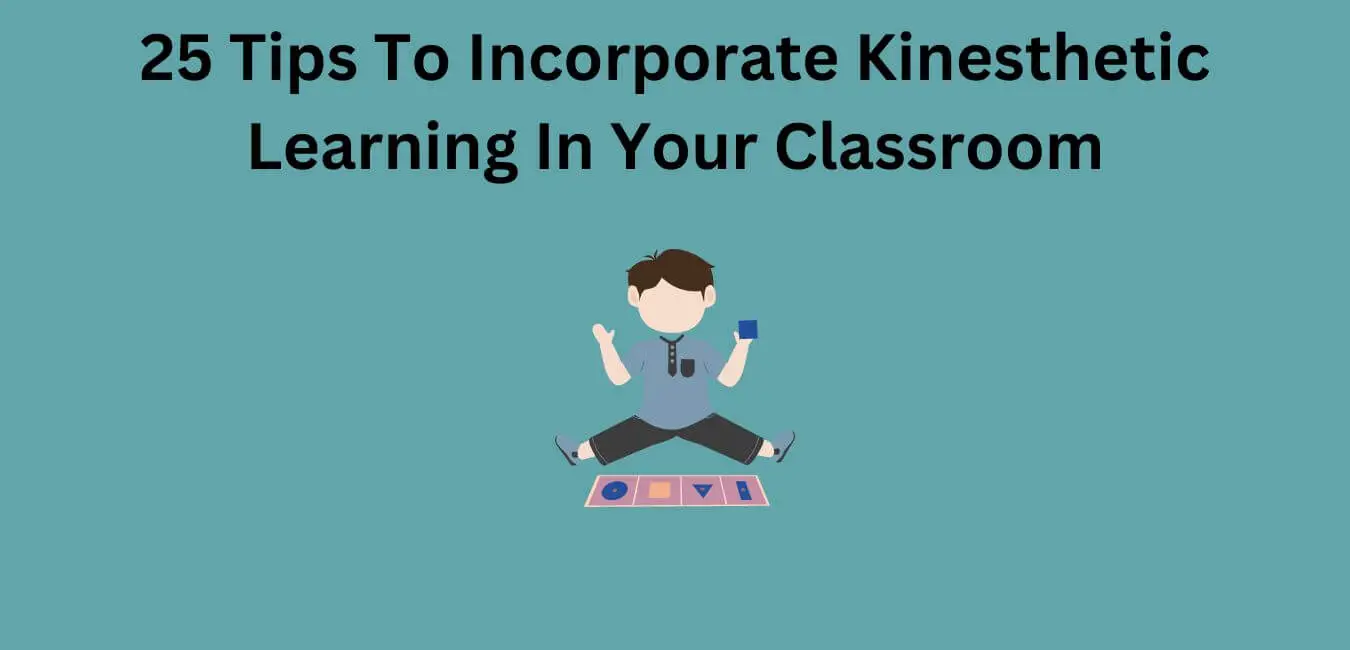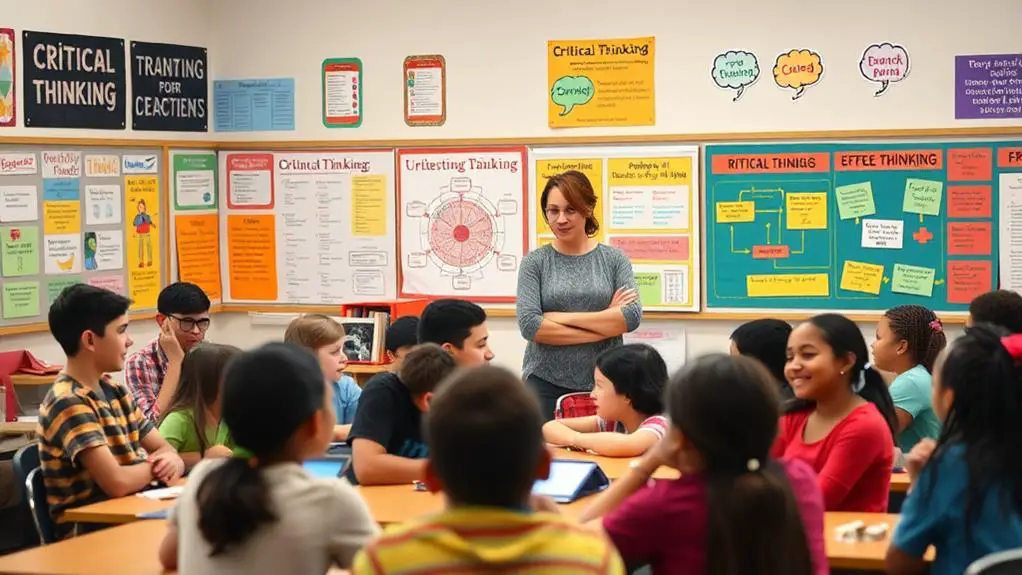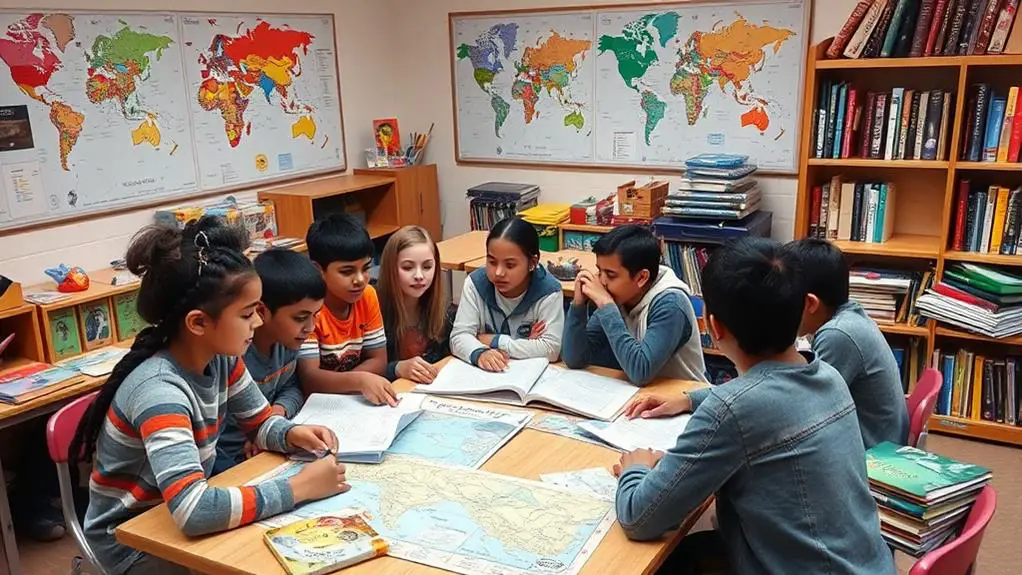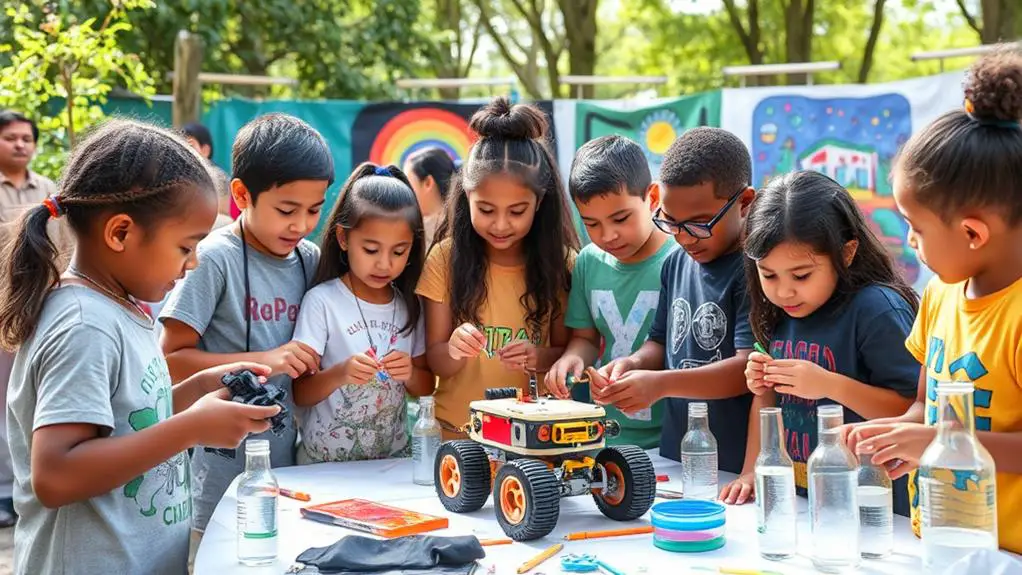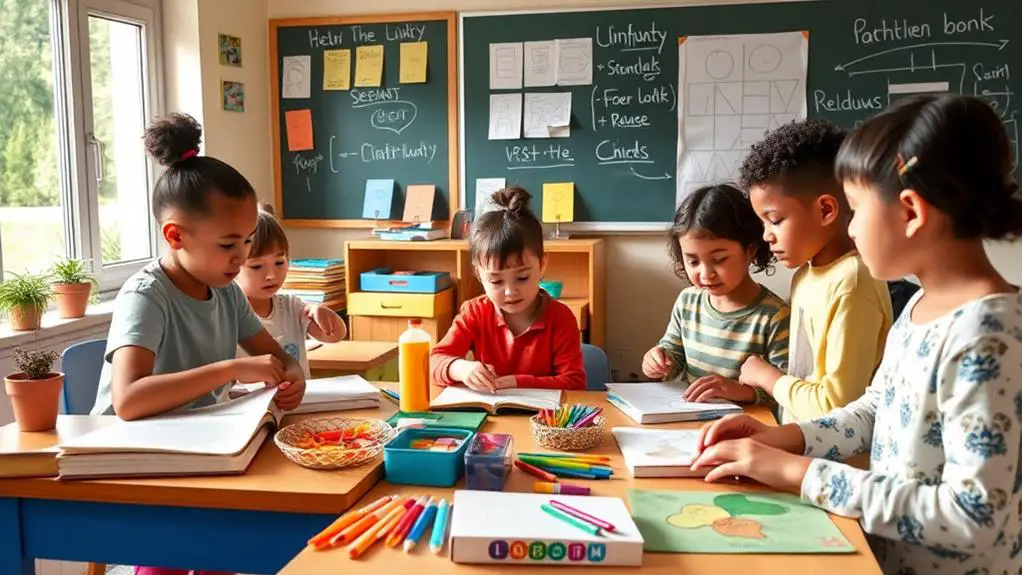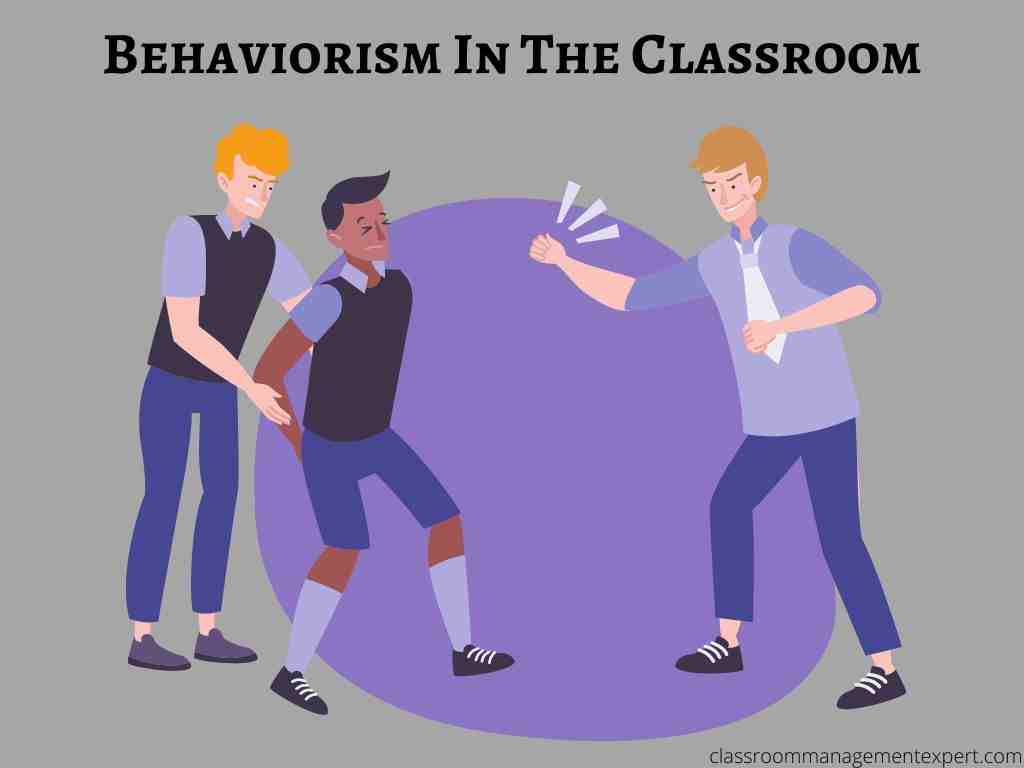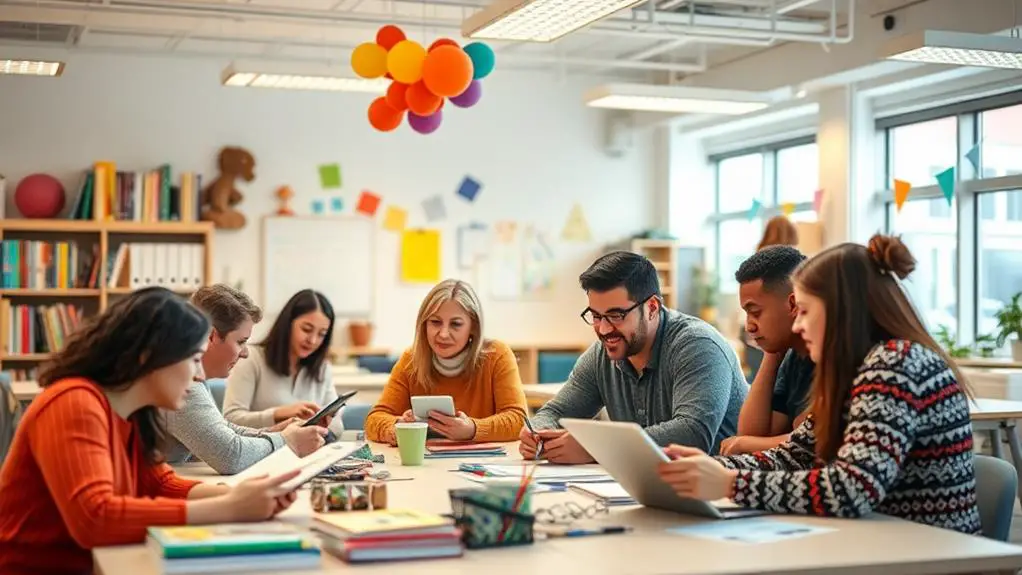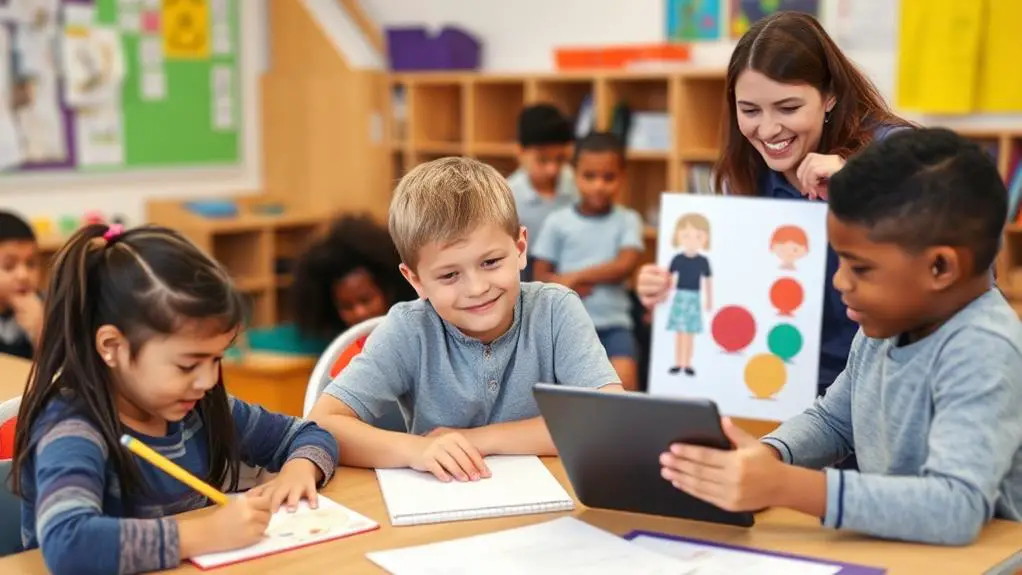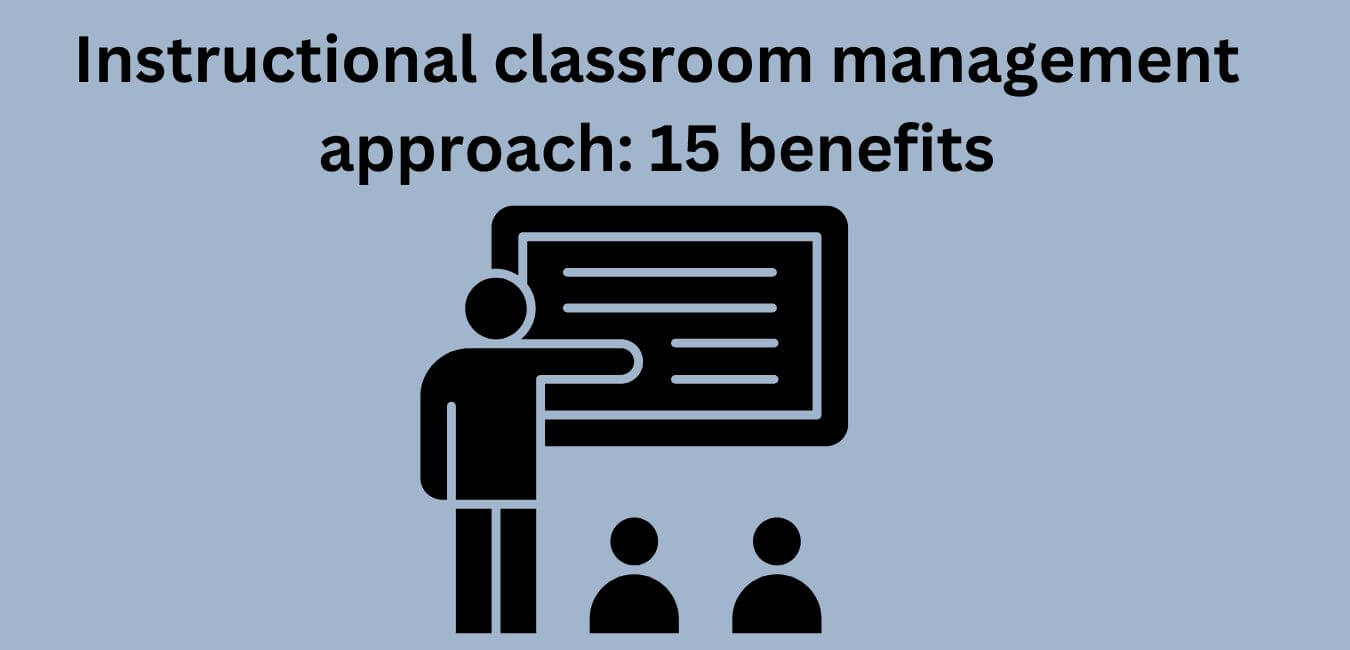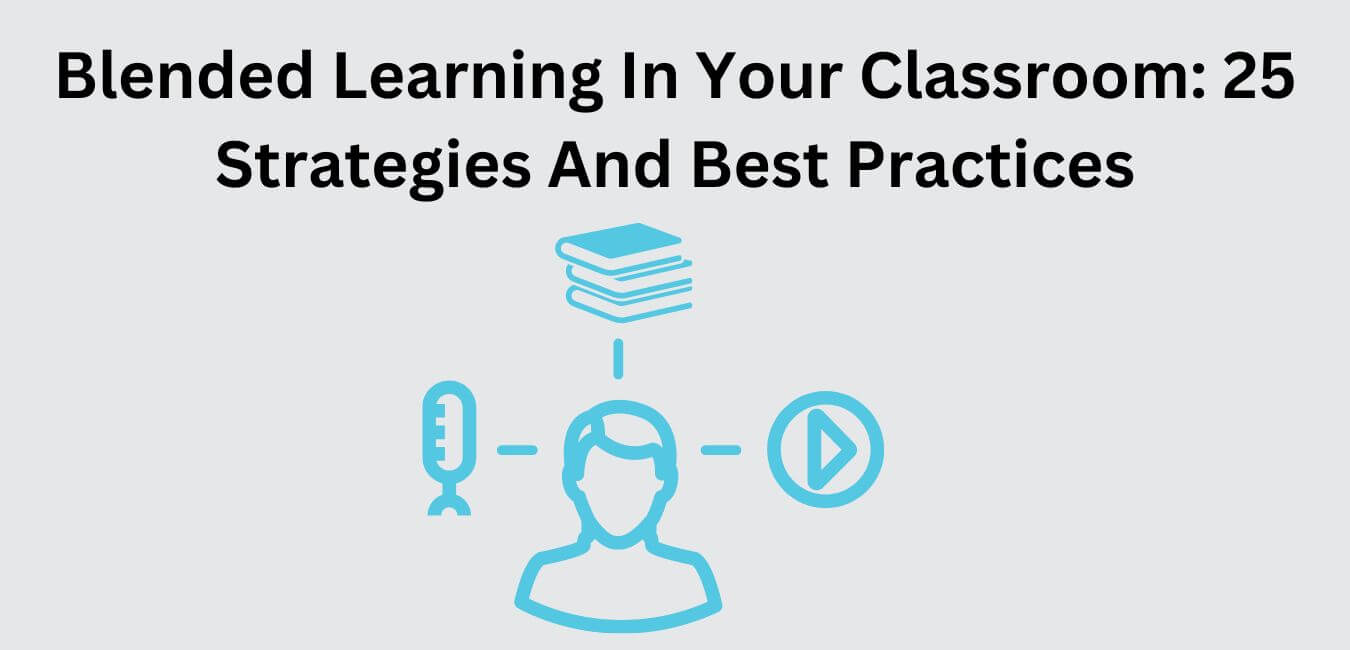Integrating critical pedagogy into the classroom can significantly enhance student engagement and empowerment. This educational approach goes beyond merely delivering content; it emphasizes the importance of fostering conversations and promoting critical thinking that links academic subjects to pressing societal issues.
To successfully incorporate these principles into your teaching, consider practical strategies that prioritize the inclusion of diverse perspectives and experiences. Implementing methods such as collaborative projects, discussions on current events, and reflective writing can create an enriching environment where students feel encouraged to think critically and question the status quo.
By prioritizing these elements, you can transform your classroom into a dynamic space for learning and growth.
Understanding Critical Pedagogy
Critical pedagogy is an educational approach that seeks to challenge conventional teaching methods and promote social justice. It emphasizes the importance of cultural relevance and the dynamics of power within the classroom. Engaging with this pedagogy means critically analyzing the curriculum to understand who it serves and how it influences the learning experience. This approach encourages students to actively participate in their education, moving beyond passive information absorption.
Transformative learning plays a significant role in this process. It fosters critical consciousness, helping students recognize social injustices and their roles within them. Reflective practice is crucial as it allows individuals to evaluate their thoughts and experiences for deeper insight.
Experiential learning connects theoretical knowledge with real-world contexts, making education more relevant and impactful.
Creating an inclusive environment involves facilitating dialogue among peers and educators, promoting open discussions that cultivate a sense of community. This process is essential for working towards educational equity, ensuring that all voices are acknowledged and respected.
Understanding these principles not only enhances personal learning but also contributes to a more equitable and inclusive educational landscape.
Importance of Critical Pedagogy
Critical pedagogy is vital for creating fair and inclusive learning environments. It promotes a culture where every voice is valued, encouraging active participation in education rather than passive absorption of information. This approach empowers individuals to question societal norms and confront injustices, fostering critical thinking about the world.
Integrating critical pedagogy into educational experiences enhances the ability to analyze complex issues. It connects personal experiences to wider societal contexts, cultivating essential critical thinking skills for navigating modern challenges. Engaging in meaningful discussions increases feelings of belonging and ownership in the learning process.
This pedagogical method also fosters empathy and collaboration, enabling the formation of significant relationships with peers. Investigating diverse perspectives leads to deeper insights about oneself and others.
Ultimately, embracing critical pedagogy transforms education and prepares individuals to be informed, active participants in their communities.
Key Principles of Critical Pedagogy
Understanding the key principles of critical pedagogy can significantly enhance your teaching methods. These concepts are essential for creating a classroom atmosphere that encourages student empowerment and promotes educational equity. Here are several important principles to consider:
- Curriculum Integration: Bring together different subjects to provide a comprehensive learning experience. For instance, connect mathematics with art by exploring geometric patterns in various artworks, allowing students to see the relevance of math in real-life contexts.
- Reflective Practices: Foster an environment where both students and educators engage in self-assessment and critical reflection. This could involve regular journaling or group discussions that encourage individuals to articulate their thoughts and feelings about their learning processes.
- Experiential Learning: Incorporate real-world experiences to deepen understanding and engagement. Field trips, community service projects, or internships can provide students with practical applications of what they learn in the classroom.
- Cultural Responsiveness: Recognize and integrate the diverse backgrounds of students to create a sense of belonging. This can be achieved by including multicultural perspectives in lesson plans and encouraging students to share their own stories and experiences.
- Community Partnerships: Work alongside local organizations to enhance the educational experience. Collaborating with libraries, museums, or non-profits can offer students unique opportunities to learn outside the traditional classroom setting.
Implementing these principles can transform classroom dynamics and address power imbalances within education. Teacher training that incorporates these concepts can lead to more equitable and relevant assessment strategies.
Prioritizing transformative education allows students to feel valued and heard, ultimately enhancing their learning experiences and fostering social consciousness. Embracing these principles not only improves your teaching but also supports a more just and inclusive educational environment for all students.
Creating a Supportive Environment
Creating a supportive classroom environment is vital for enhancing student growth and engagement. Prioritizing emotional safety and building trust establishes strong relationships between students and teachers. Embracing inclusive practices transforms classroom dynamics, promoting collaboration and peer support.
Here are effective strategies to foster a supportive atmosphere:
| Strategy | Purpose | Benefits |
|---|---|---|
| Active Listening | Ensures students feel acknowledged | Enhances trust and connection |
| Positive Reinforcement | Motivates desired behaviors | Boosts self-esteem |
| Teacher Vulnerability | Demonstrates openness and honesty | Cultivates a sense of belonging |
| Community Norms | Creates shared expectations | Encourages inclusivity |
Implementing these strategies cultivates a classroom where students feel appreciated and empowered. The focus should be on nurturing a community where everyone has a place. Emphasizing these elements will support your students’ academic and personal growth.
Encouraging Student Voice
Giving students a voice in their learning is essential for enhancing their engagement and sense of ownership. When students feel empowered, they contribute to a classroom environment that values every individual. This approach goes beyond mere conversation; it involves fostering genuine dialogue and active listening.
To effectively amplify student voices, consider these strategies:
- Incorporate personal narratives: Allowing students to share their experiences not only enriches their identity but also creates a deeper connection with the learning material.
- Create feedback mechanisms: Regularly seeking student input on lessons and activities promotes a sense of democratic participation and ensures that their opinions shape the learning experience.
- Engage in experiential learning: Design projects that connect with real-world issues. This encourages students to articulate their thoughts and apply their knowledge in meaningful ways.
- Utilize reflective practices: Encourage students to journal about their learning processes. This practice fosters self-awareness and personal growth, helping them understand their educational journeys.
- Facilitate group discussions: Establish environments for open dialogue where every student feels heard and valued. This approach reinforces the importance of collaboration and diverse perspectives.
Implementing these strategies can significantly enhance the educational experience, making it more inclusive and empowering for students.
Incorporating Social Justice Issues
Incorporating social justice issues into the classroom is essential for fostering a more equitable learning environment. Understanding the fundamental concepts of social justice and engaging with a range of perspectives allows for richer discussions. This practice empowers students to critically analyze societal structures and their impact on various communities.
Creating an inclusive atmosphere encourages open dialogue, which enhances social awareness and promotes justice. To effectively integrate these topics, consider using diverse materials that reflect various cultures and experiences. For instance, literature from marginalized voices can serve as a powerful tool to spark discussions.
Incorporating historical examples, such as the Civil Rights Movement, can help students grasp the significance of activism and advocacy. Furthermore, implementing projects that encourage community engagement allows students to apply their knowledge in real-world contexts.
For example, organizing a service-learning project in collaboration with local organizations can deepen their understanding of social issues. This hands-on approach not only reinforces learning but also fosters a sense of responsibility and empowerment among students.
Understanding Social Justice Concepts
Understanding social justice concepts is crucial for creating an inclusive classroom where every student feels valued and supported. These principles help educators address systemic inequalities and uplift marginalized voices, fostering a more equitable learning environment.
Key ideas to consider include equity frameworks, which ensure that all students receive the necessary support to thrive academically. An intersectional analysis is important for recognizing how different identities interact and shape student experiences.
Understanding the historical context of social issues can enhance classroom discussions and promote empathy among students, allowing them to connect more deeply with the material.
Awareness of power dynamics is vital, as it influences classroom interactions. Recognizing these dynamics can lead to practices that promote fairness.
Furthermore, emphasizing cultural responsiveness in teaching makes lessons more relatable and relevant, contributing to a sense of belonging for all students.
Incorporating these concepts into your teaching approach is essential for fostering a supportive and inclusive classroom environment.
Engaging Diverse Perspectives
Incorporating diverse perspectives in the classroom is vital for enhancing discussions and deepening students’ understanding of social justice issues. By weaving in cultural narratives and global viewpoints, educators create an environment where students can explore and recognize intersectional identities. This approach promotes belonging and encourages open discussions among learners.
Using interdisciplinary methods allows educators to connect various subjects with community voices, making the curriculum more relevant. Experiential learning activities enable students to link theoretical concepts with practical applications, which sharpens their critical thinking skills.
Reflective practices help students assess their own beliefs and biases, fostering a sense of agency in their educational journey. Promoting dialogic engagement ensures that every voice is acknowledged, fostering a collaborative atmosphere that prioritizes ethical considerations.
This method not only facilitates transformative learning experiences but also empowers students to take action on social justice issues. For example, incorporating literature from diverse authors or hosting community forums can enhance understanding and inspire students to advocate for change.
Collaborative Learning Strategies
Collaborative learning strategies enhance the classroom environment by promoting interactions among students that lead to better comprehension.
Engaging in group problem-solving allows students to confront challenges together, fostering an appreciation for different viewpoints. This method not only cultivates critical thinking skills but also enriches the overall learning experience for all participants.
For instance, incorporating activities where students work in small teams to tackle real-world problems can deepen their understanding and encourage teamwork.
Peer-to-Peer Learning
Peer-to-peer learning is a dynamic approach that encourages students to engage with each other’s ideas and perspectives. This method enhances comprehension and fosters a strong sense of community within the classroom.
When students collaborate, they embrace hands-on learning, which leads to a more profound understanding and sharing of knowledge.
To effectively incorporate peer-to-peer learning in your classroom, consider these strategies:
- Mutual Teaching: Enable students to teach one another. This process helps reinforce their understanding and boosts their confidence in their knowledge.
- Role Reversal: Promote the idea of switching roles among students, allowing them to view concepts from different angles and enhancing empathy.
- Reflective Dialogue: Create spaces for discussions that encourage critical thinking and reflection on various ideas.
- Informal Mentorship: Pair students who’ve strengths with those who may need assistance. This collaboration nurtures a supportive environment.
- Skill Exchange: Organize sessions where students can share their unique skills, enriching the learning experience for all participants.
Implementing these strategies can significantly enhance the educational experience, making learning more interactive and effective.
Group Problem-Solving
Group problem-solving is an approach that unites students in addressing challenges, enhancing their teamwork and critical thinking skills. Engaging in collaborative brainstorming fosters an inclusive atmosphere where every idea is valued. This environment encourages individuals to express their thoughts freely, cultivating a culture of openness and innovation.
Working in groups allows for a thorough examination of the problem at hand. This collaborative effort enables participants to consider various perspectives and discover solutions that may not arise when working alone. Through discussion and debate, students refine their analytical abilities and gain an appreciation for differing viewpoints.
Moreover, group problem-solving is vital for developing interpersonal skills. Participants learn to communicate clearly, listen attentively, and negotiate effectively with their peers. These skills not only enhance academic outcomes but also equip students to navigate real-world situations.
Implementing group problem-solving in the classroom creates a nurturing learning environment. Collaboration often leads to a deeper understanding of the material and fosters stronger relationships among classmates.
Embracing teamwork and engaging in critical reflection is a valuable journey for everyone involved.
Diverse Perspectives Integration
Integrating diverse perspectives in the classroom is essential for enhancing the learning experience and promoting critical thinking. This method values every student’s voice, fostering an inclusive environment where various viewpoints can be explored.
It allows students to reflect on their intersecting identities through community stories and cultural narratives, enriching their understanding of the world around them.
To effectively incorporate diverse perspectives, consider the following collaborative learning strategies:
- Dialogue Facilitation: Create open discussions that invite students to share their personal experiences. This practice helps to build empathy and understanding among peers.
- Experiential Learning: Utilize real-world scenarios to link theoretical concepts with students’ unique backgrounds. This approach makes learning more relevant and engaging.
- Identity Investigation: Design projects that encourage students to examine their own identities and the influence these have on their perspectives. This self-reflection can deepen their critical thinking skills.
- Reflective Practices: Offer opportunities for students to critically assess their learning and consider the viewpoints of others. This practice promotes a culture of thoughtful engagement.
- Peer Teaching: Foster an environment where students can pair up to share insights and learn from one another. This method not only enhances understanding but also builds collaboration skills.
These strategies not only enrich the classroom environment but also prepare students to navigate a diverse world effectively.
Assessing Critical Thinking Skills
Assessing critical thinking skills is vital for creating a classroom atmosphere that encourages meaningful learning and student involvement. Reflective dialogue prompts students to examine their thought processes, enhancing metacognitive awareness. This awareness enables them to identify their strengths and recognize areas needing improvement.
Integrating ethical reasoning into classroom discussions allows students to explore moral consequences, which nurtures empathy and the ability to appreciate different viewpoints. Assignments that demand critical analysis and evaluation of arguments stimulate creative thinking and cognitive flexibility. This approach not only sharpens their problem-solving abilities but also fosters an environment where diverse perspectives are acknowledged and valued.
Encouraging students to gather and synthesize information from multiple sources helps them construct comprehensive arguments. Regular assessments of these skills support their development into individuals capable of addressing complex issues.
Creating a sense of belonging is crucial, as it ensures every student feels appreciated and understood. Ultimately, the focus shifts from grades to equipping students with essential skills for success in an interconnected world. Prioritizing these skills transforms the classroom into a thriving community of critical thinkers.
Overcoming Challenges in Implementation
Implementing critical pedagogy in the classroom presents various challenges that educators must navigate effectively. Issues such as adapting the curriculum, facing student resistance, and managing limited resources can hinder the process. A focused approach can help create a more supportive learning environment for both educators and students.
Engaging in professional development is essential. Educators should pursue training that enhances their skills in managing classroom dynamics and fostering critical conversations. Collaborative efforts with colleagues can also be beneficial. By sharing resources and strategies, teachers can streamline the implementation process and support each other in overcoming common obstacles.
Effective time management is crucial. Planning lessons that allow ample time for critical discussions helps avoid the feeling of rushing through important topics.
It’s equally important to secure administrative support. Gaining the backing of school leaders ensures that educators have access to necessary resources and that their pedagogical approach is understood and valued.
The integration of technology can significantly enhance engagement and facilitate critical thinking. Utilizing interactive tools can make lessons more dynamic and encourage student participation. For instance, platforms like Google Classroom or collaborative tools such as Padlet can foster an interactive learning environment.
Resources for Educators
Critical pedagogy is an important approach that encourages educators to rethink their teaching methods and engage more deeply with their students. Having access to the right resources can significantly enhance this process.
It’s essential to explore recommended reading materials that challenge traditional educational practices, online course platforms that offer innovative training, and community engagement strategies that foster meaningful interactions. These resources not only facilitate your professional development but also create a more enriching learning environment for your students.
For instance, books like “Pedagogy of the Oppressed” by Paulo Freire can provide foundational insights, while online platforms like Coursera or EdX offer courses that dive into contemporary educational issues.
Engaging with local communities through service-learning projects can further deepen students’ understanding and connection to the material. Utilizing these tools effectively can transform the educational experience for both educators and learners.
Recommended Reading Materials
Integrating critical pedagogy into your classroom is vital for developing an equitable and empowering learning environment. Engaging with a variety of reading materials can enhance your understanding of key concepts such as critical theory, transformative education, and reflective practice.
These resources will support your efforts in promoting educational equity and fostering learner autonomy among students.
Here are some recommended reading materials:
- “Pedagogy of the Oppressed” by Paulo Freire: This foundational text examines anti-oppressive teaching methods and underscores the significance of dialogue in education.
- “Critical Pedagogy: Notes from the Real World” by Joan Wink: This book offers practical applications of critical pedagogical frameworks and insights into curriculum reform.
- “Feminist Pedagogy: Looking Back to Move Forward” by Jennifer L. Hamer: Explore how feminist pedagogy can transform your teaching strategies and classroom dynamics.
- “Experiential Learning: A Best Practice Handbook for Educators and Trainers” by Colin M. Beard: Discover effective ways to integrate experiential learning into your curriculum, enhancing student engagement and retention.
- “Teaching to Transgress: Education as the Practice of Freedom” by bell hooks: This work highlights the relationship between education and social justice, providing valuable perspectives for educators.
These texts will equip you with the knowledge and tools necessary to cultivate a more inclusive and transformative educational experience for your students.
Online Course Platforms
Online course platforms serve as valuable resources for educators aiming to incorporate critical pedagogy into their teaching practices. These digital environments enhance online education and ensure that all students have access to course materials.
Virtual classrooms promote an inclusive setting that encourages collaboration and active participation among learners.
Effective instructional design is essential for leveraging technology to enhance the educational experience. Asynchronous learning enables students to interact with multimedia content at their own pace, allowing them to comprehend concepts in ways that are personally meaningful.
This adaptability can foster a deeper understanding and a sense of ownership in their educational journey.
Collaborative tools can motivate students to work together, exchange ideas, and cultivate a sense of community, even in a virtual setting. Such connections are vital for creating a feeling of belonging among learners.
Thoughtful integration of these components can lead to a vibrant online course that reflects the tenets of critical pedagogy. The goal is to empower students and help them recognize the significance of their learning within a broader context.
Embracing these platforms can truly transform your classroom experience.
Community Engagement Strategies
Community engagement strategies are vital for educators aiming to connect classroom learning with real-world issues. These strategies help strengthen relationships within the community, leading to enriching experiences that enhance students’ understanding of civic responsibility. Here are some effective approaches to consider:
- Local partnerships: Form collaborations with community organizations that complement your curriculum. This approach allows students to gain insights and practical skills while contributing to local initiatives.
- Service learning: Incorporate projects that serve the community while also teaching essential academic skills. This dual focus not only benefits students’ education but also addresses real needs within the community.
- Community workshops: Organize events that promote participation and knowledge sharing between students and local residents. These workshops can provide valuable learning opportunities and foster a sense of belonging.
- Outreach programs: Create initiatives connecting students with underrepresented community members. Such programs cultivate empathy and understanding, preparing students for diverse interactions in society.
- Collaborative projects: Engage with local businesses or nonprofits on projects aimed at addressing specific community challenges. This hands-on approach can instill a sense of responsibility and teamwork in students.
Implementing these strategies enriches students’ learning experiences while reinforcing their connections to the community.
Encouraging neighborhood activism and cultural exchanges can broaden their perspectives. Student mentorship programs can also bridge generational gaps, offering valuable support and guidance.
Through these strategies, educators can help students develop a sense of belonging and empower them to be active, responsible members of their communities.
Conclusion
Critical pedagogy is an educational approach that emphasizes the importance of dialogue, reflection, and social justice in learning environments. It encourages educators to create spaces where diverse perspectives are recognized and valued. This approach not only enhances students’ understanding of complex social issues but also empowers them to take an active role in shaping their own educational experiences.
As you guide your students through the learning process, remember that critical pedagogy acts as a vital tool for fostering critical thinking and collaboration. It allows learners to engage with various viewpoints, encouraging them to question norms and challenge injustices. When students collaborate and reflect on their experiences, they contribute to a dynamic classroom environment that prioritizes inclusivity and respect.
For instance, incorporating group discussions on current events can help students articulate their thoughts and learn from one another. Providing resources that highlight marginalized voices can further enrich the dialogue in your classroom. This transformative approach not only cultivates a sense of community but also prepares students to navigate their futures as informed and responsible citizens. Embrace critical pedagogy to create a vibrant learning atmosphere where every perspective is acknowledged and valued.

